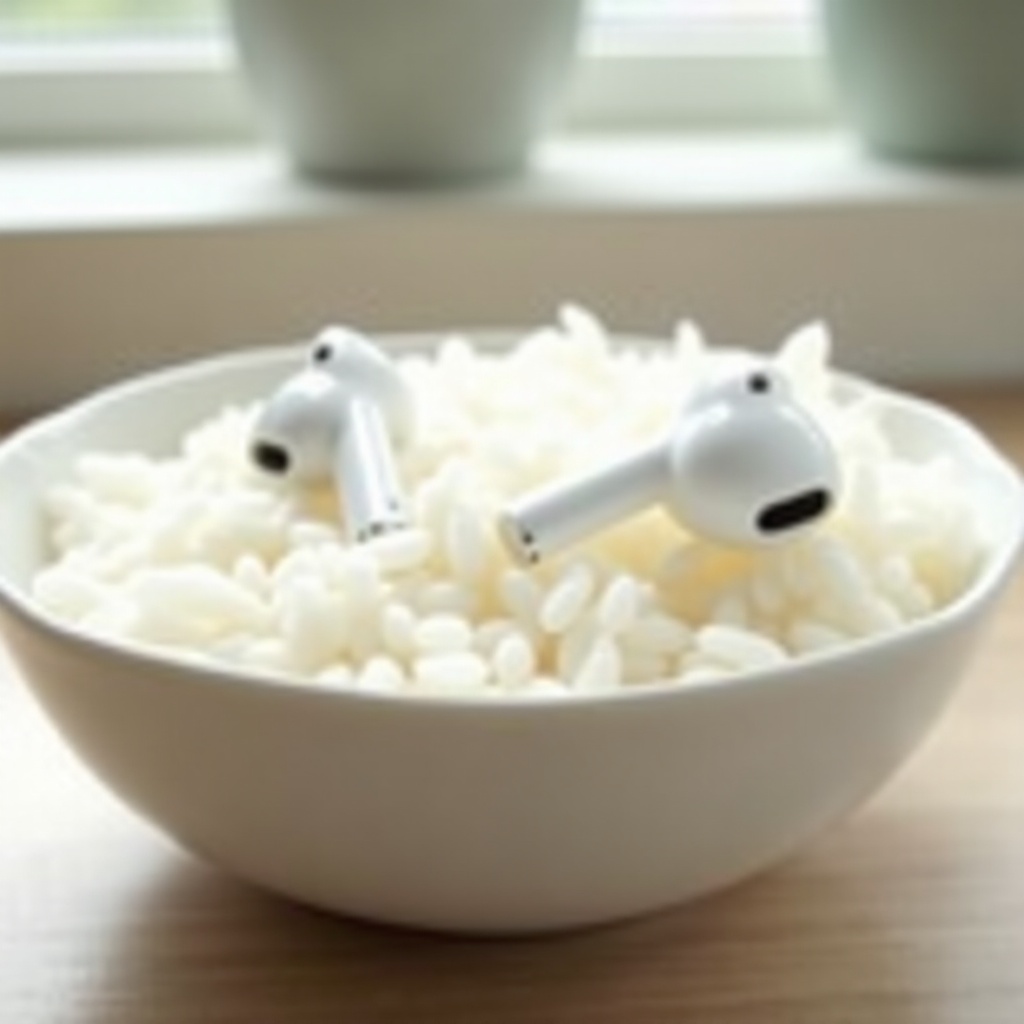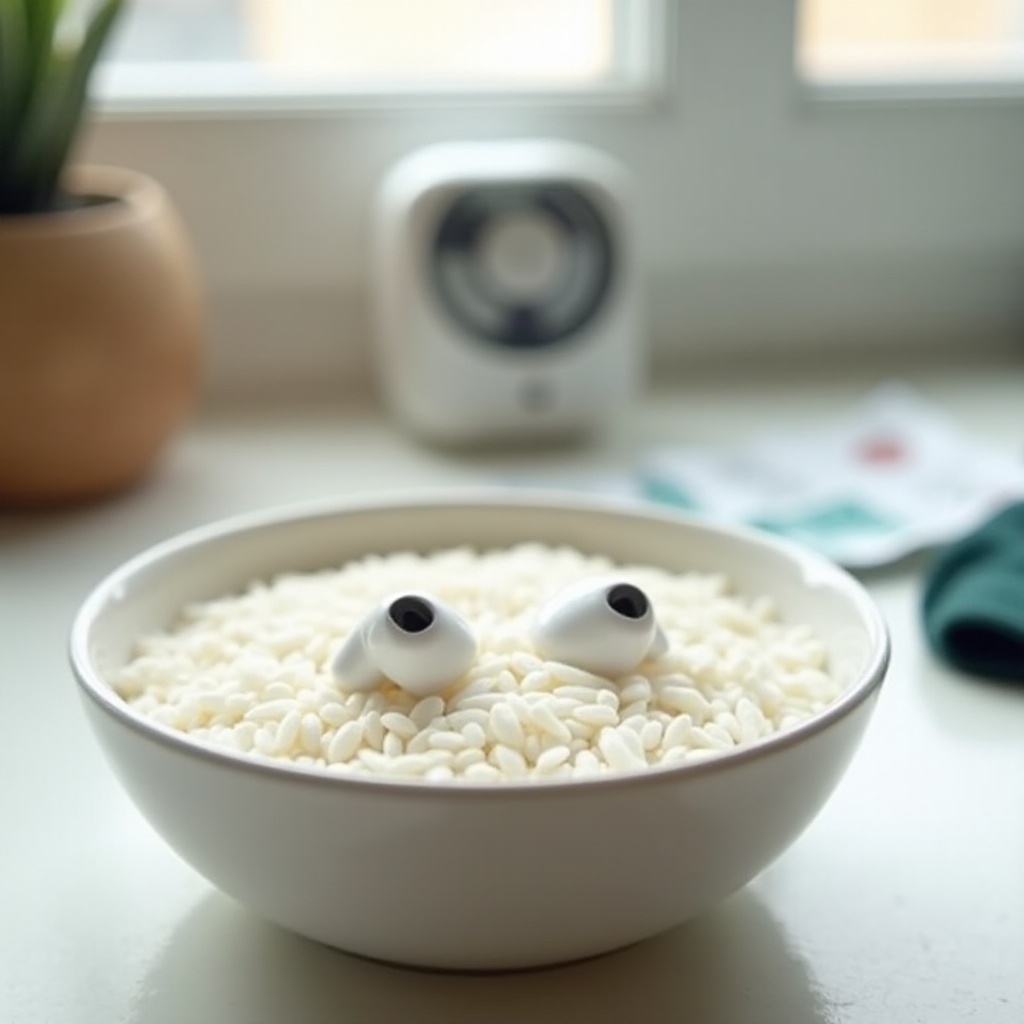How Long to Leave AirPods in Rice - Complete Guide
Introduction
Accidentally spilling water on your AirPods can be both frustrating and worrisome. You might wonder if they are completely ruined or if there's a way to save them. A common method to rescue water-damaged electronic devices, including AirPods, is by using rice. The effectiveness and duration required often come up as major questions. This guide dives deep into how long you should leave your AirPods in rice, how to do it correctly, and other alternative drying solutions.

Understanding AirPods Water Damage
Water damage in electronics can wreak havoc, causing short circuits and irreparable damage. AirPods, due to their small size and intricate design, are particularly susceptible. Water infiltrates the delicate internal components, impairing sound quality and potentially making them nonfunctional. Water damage happens quickly but fixing it can be a slow process. Recognizing the extent of the damage early on is crucial, as it impacts the success of any drying method you choose, whether rice or otherwise.

Why Use Rice to Dry AirPods?
Using rice as a drying agent for electronics is a popular home remedy. Rice is believed to absorb moisture, which helps in drying out the internal components more quickly. When rice surrounds a water-damaged device, it can draw moisture away from the electronics. Additionally, rice is readily available in most households, making it a convenient first step. Its desiccating properties come in handy for those sudden spills or accidental drops, providing an immediate DIY drying option.
However, there are contrasting opinions on its effectiveness. Some argue that rice may not be the most efficient, as professional-grade desiccants or silica gel can be more powerful. Still, rice remains a go-to for many due to its accessibility and ease of use.
How Long Should You Leave AirPods in Rice?
Leaving your AirPods in rice for an appropriate length of time is crucial. Generally, it’s recommended to leave them in rice for at least 24 hours. However, the severity of the water damage may necessitate extending this to 48 hours, especially if the device was submerged for a significant period.
It’s critical not to rush the process. Removing the AirPods too early can leave residual moisture, risking further damage once powered on. Patience is key to ensuring every bit of water is absorbed effectively.
Step-by-Step Guide to Using Rice
Preparing Your Wet AirPods
- Turn Them Off: Immediately switch your AirPods off to prevent short circuits.
- Remove Them From Any Case: Take out the AirPods from their charging case and dry the case separately.
- Gently Wipe the Surface: Use a soft, lint-free cloth to remove any surface water.
Proper Placement in Rice
- Find an Airtight Container: Place your AirPods in an airtight container.
- Submerge in Rice: Completely cover your AirPods with uncooked rice, ensuring they are fully submerged.
- Seal the Container: Close the container to create a sealed environment where the rice can continuously absorb moisture.
Monitoring the Drying Process
- Check After 24 Hours: Open the container and inspect your AirPods.
- Assess the Moisture Level: If still wet, re-submerge and wait another 24 hours.
- Use Silica Packets: For enhanced absorption, add silica packets to the rice.
Alternative Drying Methods
If you find rice ineffective, there are several other methods to consider for drying your AirPods. Silica gel packets are known for their superior moisture-absorbing properties. You can find anti-humidity products at electronics stores that work effectively for drying electronics. Another practical solution is investing in a specialized drying pouch designed for electronics. Using a low-temperature hairdryer can also help, but do so with caution to avoid heat damage.

Checking for Damage Post-Drying
Once you’ve patiently waited and followed the recommended drying time, it's time to check your AirPods for any signs of damage. Begin by visually inspecting them for any residual water or signs of corrosion. Power them on and check if they connect to your device smoothly. Test the sound quality by playing audio through both AirPods, making sure there’s no distortion or malfunction. If any issues persist, contacting Apple Support might be necessary.
Preventative Measures for Future Safety
Avoiding water damage in the first place is always the best course of action. Keep your AirPods away from liquids and use waterproof cases for extra protection. Be cautious while using them in humid environments or during workouts when sweat exposure is high. Regularly check and clean the charging ports to ensure there's no moisture build-up.
Conclusion
Understanding how long to leave your AirPods in rice is crucial for effective drying. This guide covered various aspects, including the method’s rationale, step-by-step instructions, and alternative drying solutions. With proper care and preventative measures, you can ensure your AirPods stay functional and water-resistant for a long time.
Frequently Asked Questions
Can You Use Anything Other Than Rice to Dry AirPods?
Yes, silica gel packets, specialized drying pouches, and low-temp hairdryers are excellent alternatives. They may be more effective than rice due to their superior moisture-absorbing capabilities.
What Are the Risks of Leaving AirPods in Rice for Too Long?
Prolonged exposure won’t typically harm your AirPods, but rice particles could potentially infiltrate the earbud openings. Regularly checking the drying progress helps mitigate this risk.
How Can I Avoid Water Damage to My AirPods in the Future?
Use waterproof cases, keep them away from liquids, avoid using them in high-moisture environments, and clean the charging ports regularly to prevent water damage and maintain functionality.



